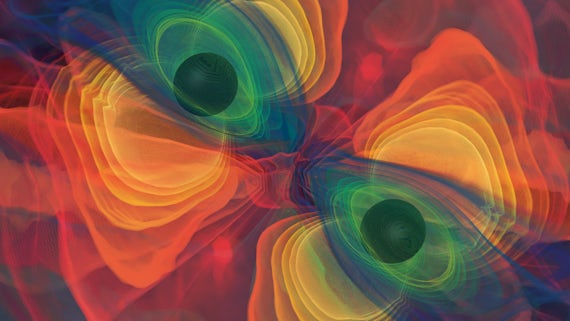Astrophysics of compact object binaries

Our researchers develop astrophysical population models, working to answer the question of how neutron stars and black holes both form and evolve across cosmic time.
Our research
Gravitational wave observations of black hole and neutron star binaries will elucidate not only the properties of compact objects, but also how they are first formed and how they have evolved.
There are many pathways to the formation of compact object binaries. Our group focuses on two broad categories outlining different scenarios: firstly, the formation through the evolution of massive binary stars in the field of galaxies, and secondly, through close gravitational interactions in the dense cores of stellar clusters.
Using high-performance computing simulations and analytic theory, we explore the formation and evolution of compact binaries in these two environments.
By comparing the predictions of our astrophysical models of binary formation to gravitational wave data, we constrain the origin of the sources, shed light on massive star evolution, the natal kicks of compact objects, the unknown properties of infant clusters and ultimately unveil the processes that govern the formation and evolution of stars and clusters across cosmic time.
LIGO scientists detect gravitational wave signal from the merging of two black holes.


